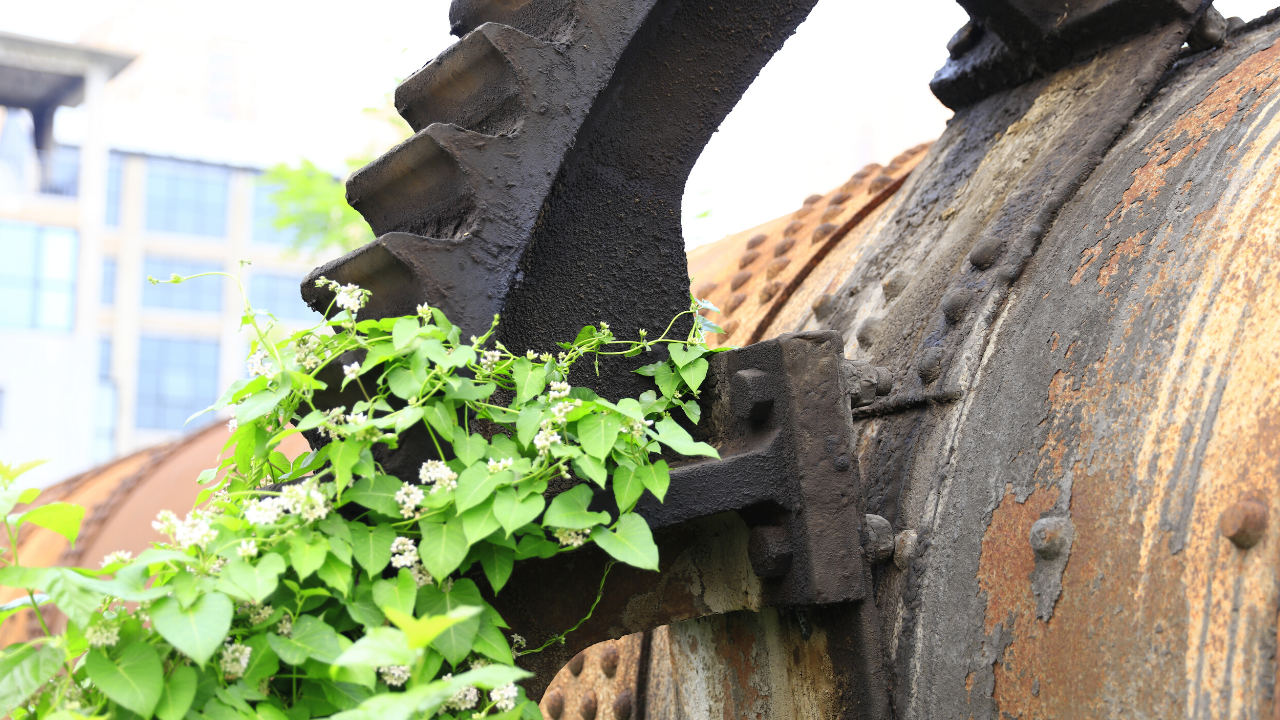
A good paint job is essential to preserving equipment in industrial and commercial workplaces.
Rust, also known as iron oxide, is a perennial problem in the industrial environment. Every time you take action against rust, you’re fighting a natural process that’s always unfolding.
Rust happens when iron or an iron alloy is exposed to oxygen and moisture. Over time, oxygen atoms fuse with the metal on an atomic level. This results in iron oxide, a new compound.
Because iron oxide has weaker chemical bonds than the materials it proceeded from, it is the scourge of high-performance equipment everywhere. Standard rust is similar in properties to white rust, the kind that forms on surfaces of zinc-coated materials for the same reasons.
Needless to say, rust prevention is one of the most important considerations in any workplace with iron equipment. Rust makes surfaces more permeable to a variety of other contaminants.
For example, if you use corrosive materials around your equipment, rusted areas can become damaged by incidental exposure. Rust is simply too fragile to meet original performance standards.
Luckily, there are several ways to prevent rust:
1. Reduce Moisture in the Air
Rust can’t form without the hydrogen provided by moisture to spur a chemical reaction.
If you are noticing a sharp uptick in rust, there may be other problems to contend with. Check your HVAC system and have your building inspected. Undiagnosed issues with the building’s outer envelope and problems with piping or air circulation can promote rust.
2. Consider Different Materials
Stainless steel is trusted in a wide range of industrial applications, but it isn’t 100% rustproof. Chromium oxide that provides surface protection to your stainless steel will eventually wear out.
If possible, consider these alternatives:
a. Aluminum
Aluminum is lightweight and resists corrosion. It contains almost no iron, preventing the reaction that causes rust. The intentional formation of aluminum oxide on the surface – using a controlled application of water – protects the underlying metal from additional corrosion.
b. Copper, Metal, or Brass
All three of these metals are low in iron and naturally resistant to corrosion. They do oxidize over time, but with a minimal effect on performance. Oxidization is most noticeable in copper, which forms a characteristic green patina. This patina has a protective effect.
c. Galvanized Steel
Galvanized steel takes a very long time to rust, though it will eventually do so. Galvanized steel has a thin layer of protective zinc. The zinc is a “sacrificial metal” that is more reactive than iron and will bond to oxygen atoms more easily. Eventually, however, the coating will be exhausted.
There are many situations where steel is the only option. Both stainless steel and galvanized steel are vulnerable to rust, but you can extend their surface life through various specialty coatings.
Specialty Coatings for Protecting Steel from Rust
It should come as no surprise that a quality paint job is one of the earliest and easiest steps in extending the life of industrial equipment. Power plants, piping systems, natural gas facilities, and more reduce maintenance costs and increase performance using superior surface protection.
Here’s how an industrial painting contractor can help:
1. Use Rustproof Primer and Paint
Primer is a general term for a preparatory undercoat used before painting. All primers improve the adhesion of paint to the surface. Rustproof industrial primer and paints can protect surfaces prone to corrosion. In most cases, the best results are obtained by thoroughly cleaning a surface and removing all existing rust, though direct-to-rust coatings can also be effective.
2. Use Specialty Antirust Coating
Antirust coatings can be applied directly onto a fully-painted surface. The exact type of coating and how it works depends on the underlying metal. For steel, it’s common to see zinc-based coatings. These mimic the properties of galvanized steel by providing a new sacrificial layer. This can be applied in addition to or instead of new coats of paint.
3. Apply Rust Converters
Rust converters, also known as “rust remover” or “rust killer,” can be applied as a primer or as a standalone chemical solution. This compound converts existing iron oxide into a chemical barrier that protects the substrate. Most rust converters are water-based and use an organic polymer for the protective effect. Any treated rust will change from red to black.
Performance Painting Contractors Will Help You Bust Rust
The global cost of corrosion is $2.5 trillion annually. What’s it costing you?
Rust can cause inconsistent equipment performance and lead to equipment failure. It may cost only a few hundred dollars to proactively guard against rust – compared to thousands for a new piece of equipment that may take weeks to arrive.






